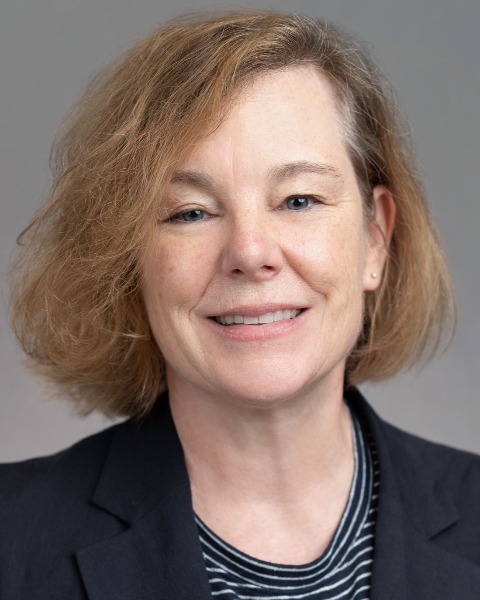QoL and Patient-Reported Outcome and Supportive Care
Poster Session 3
P-471: The MMRF Cure Cloud research study: a real-world longitudinal investigation of patient treatments and outcomes, including Patient Reported Outcome (PRO) surveys
Friday, September 29, 2023
1:15 PM - 2:15 PM EEST

Eva M. Lepisto, MSc, MA (she/her/hers)
VP Informatics
MMRF
Norwalk, Connecticut, United States
Introduction: Despite lack of clear curative regimens for multiple myeloma (MM) patients, survival has increased over the past 2 decades. Patients are managed on therapy for years, often progressing through complex treatment regimens. Unfortunately, some patients (e.g. Black Americans, those with high-risk disease) have consistently worse outcomes, and it remains unclear how to optimize therapy for every patient. The MMRF is enrolling a longitudinal research study called CureCloud to engage a US cohort of MM patients along their treatment journey in efforts to understand their treatments, outcomes, personal experiences, and molecular features of the disease. There are no specific therapy or demographic requirements for entry. Patients enroll with their clinical care team or via a direct-to-patient portal, and blood is collected in participants’ homes. The study integrates molecular and real-world evidence data, including electronic health records (EHR) and PROs collected at six-month intervals, and is expected to enroll and follow 5000 patients for at least five years. Here we report the first learnings on RWE towards better understanding the impact of therapy on MM patients’ short- and long-term quality of life.
Methods: This was an analysis of the baseline PRO data. The FACIT-COmprehensive Score for financial Toxicity (COST) and the Cancer Therapy Satisfaction Questionnaire (CTSQ) were administered to consented patients with at least 6 months follow-up in 2022 using an emailed web-based link sent to patients between October and December 2022. Patients not completing surveys within the first week received a second email link to the surveys. For completed surveys, a composite score for the COST data was calculated with possible scores ranging from 0-44; higher scores indicate better financial well-being. The CTSQ subscales were calculated with scores ranging from 0-100; higher scores indicate higher satisfaction.
Results: 976 (96%) of the 1020 consented patients received the PROs. 192 (19%) patients completed the CTSQ and 190 (19%) the COST. Analyses were limited to 175 with active MM (91%) at time of completion. The average score for the CTSQ’s expectation of therapy (ET) was 56.5 [SD 18.7], satisfaction with therapy (SWT) was 67.9 [SD 10.8], and feelings about side effects (FSE) 72.5 [SD 16.6]. In bivariate analysis newly diagnosed patients showed increased expectations of therapy. The average COST score was 27.9 [SD 9.3], and no significant differences were observed across demographic characteristics. For both PROs, the relationship with patients’ race couldn’t be studied due to low representation.
Conclusions: This longitudinal study continues to enroll active MM patients (newly diagnosed and relapsed), both at clinical sites and through a unique direct to patient format https://mmrfcurecloud.org/ with an emphasis on ensuring inclusivity and racial diversity. The current data reveal initial patient experiences over their MM journey.
Methods: This was an analysis of the baseline PRO data. The FACIT-COmprehensive Score for financial Toxicity (COST) and the Cancer Therapy Satisfaction Questionnaire (CTSQ) were administered to consented patients with at least 6 months follow-up in 2022 using an emailed web-based link sent to patients between October and December 2022. Patients not completing surveys within the first week received a second email link to the surveys. For completed surveys, a composite score for the COST data was calculated with possible scores ranging from 0-44; higher scores indicate better financial well-being. The CTSQ subscales were calculated with scores ranging from 0-100; higher scores indicate higher satisfaction.
Results: 976 (96%) of the 1020 consented patients received the PROs. 192 (19%) patients completed the CTSQ and 190 (19%) the COST. Analyses were limited to 175 with active MM (91%) at time of completion. The average score for the CTSQ’s expectation of therapy (ET) was 56.5 [SD 18.7], satisfaction with therapy (SWT) was 67.9 [SD 10.8], and feelings about side effects (FSE) 72.5 [SD 16.6]. In bivariate analysis newly diagnosed patients showed increased expectations of therapy. The average COST score was 27.9 [SD 9.3], and no significant differences were observed across demographic characteristics. For both PROs, the relationship with patients’ race couldn’t be studied due to low representation.
Conclusions: This longitudinal study continues to enroll active MM patients (newly diagnosed and relapsed), both at clinical sites and through a unique direct to patient format https://mmrfcurecloud.org/ with an emphasis on ensuring inclusivity and racial diversity. The current data reveal initial patient experiences over their MM journey.
